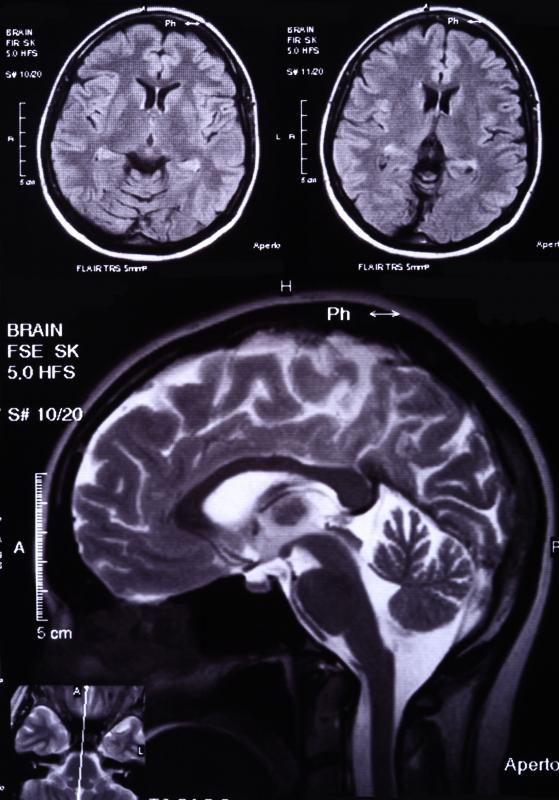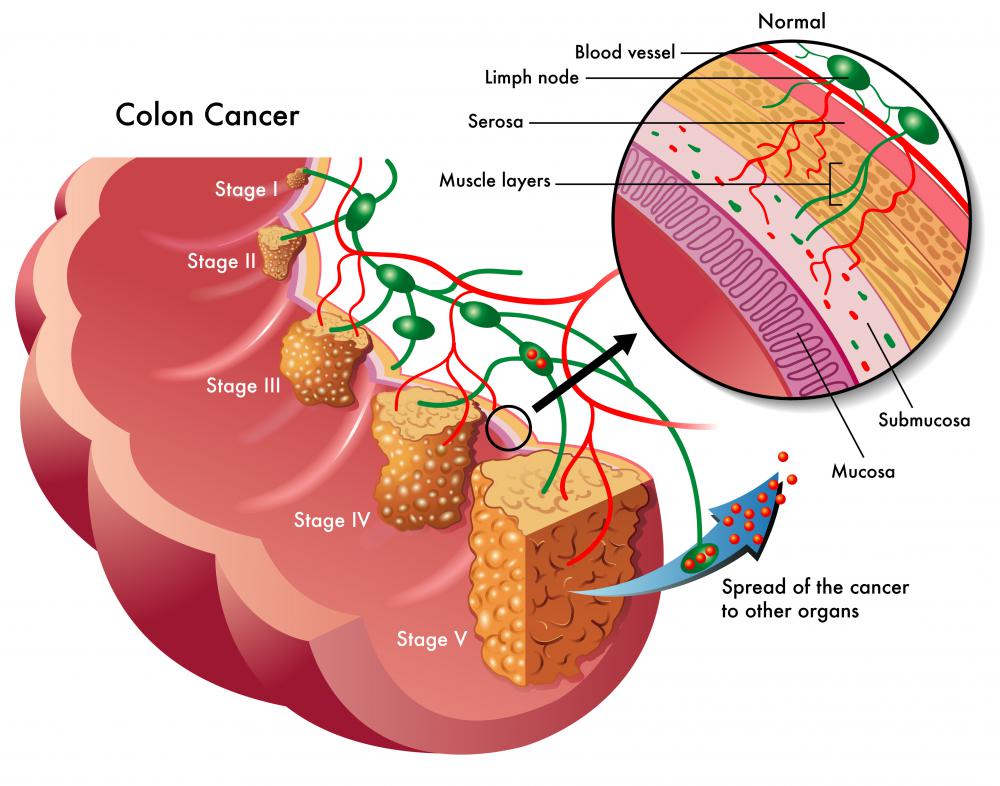At TheHealthBoard, we're committed to delivering accurate, trustworthy information. Our expert-authored content is rigorously fact-checked and sourced from credible authorities. Discover how we uphold the highest standards in providing you with reliable knowledge.
What Is the Main Cause of Glioblastoma?
The most common brain cancer, glioblastoma multiforme, affects white matter cells known as glial cells. This cancer is particularly aggressive and life-threatening, and many researchers believe understanding the cause of glioblastoma could help people prevent it from developing. No single specific cause of glioblastoma has been identified, but there are certain contributing risk factors and causes that have been studied.
Often, a type of herpes virus that is normally inactive is found with this cancer of the brain. This virus, known as cytomegalovirus, is found with the cancerous tumors, but not in benign tumors or healthy brain cells. Another virus, simian virus 40 (SV40), is another potential cause of glioblastoma. Evidence of SV40 infection was much more likely in people with this and certain other cancers.

Unlike many types of cancer, smoking and diet do not seem to contribute to developing a glioblastoma. Some toxins and radiation may cause an onset of this cancer, however. The sweet-smelling chemical vinyl chloride, used to make the common material polyvinyl chloride, may be one such toxin. Following vinyl chloride exposure, glial cell tumors have developed in some individuals.
Radiation has long been known to contribute to some cancers. A type of radiation known as ionizing radiation that can damage cells is used in radiation therapy. Exposure to strong ionizing radiation has been linked to developing glioblastomas.

Genetics also may contribute to this form of cancer. The presence of certain genetic factors that cause other diseases seem to be linked to glioblastoma. Li-Fraumeni syndrome, Turcot's syndrome, and tuberous sclerosis are all gene-linked diseases that increase the chances of developing this brain cancer. Families with a history of some hereditary colon cancers are also considered to have a greater risk.

Chromosomes are groups of genes that are inherited. Changes to chromosomes may cause glioblastomas. Some individuals who have developed this cancer have a deficient copy of chromosome 17, or lack it entirely. This chromosome contains the code for a tumor suppressor gene, and without this protection, the risk could increase.
Other chromosomal changes are notable for their possible role. In four-fifths of people with glioblastoma multiforme, there are excess copies of chromosome 7. Alterations in several other chromosomes, such as 4 and 9, may also increase the risk for, or even cause, this cancer.

Risk factors that may work in conjunction with a root cause of glioblastoma have been identified. Older males are at a higher risk for this cancer, along with Caucasians and Asians. Certain other brain tumors like astrocytomas may also change into glioblastoma if they are allowed to grow and spread.
AS FEATURED ON:
AS FEATURED ON:















Discussion Comments
Our 67 year old aunt was just diagnosed with glioblastoma multiforme. How long will she live at this age and will the tumor continue to grow or can the doctors make her life tolerable without pain?
Post your comments